This review was provided for free, but Cit-E-Cycles loaned me a demo bike to test. My goal is to be transparent and unbiased with you, this video and writeup are not meant to be an endorsement of Trek or Electra products. I welcome your corrections, additions, and feedback in the comments below, and the Electra electric bike forums.
Observations:
- Electra is part of Trek, which is one of the “Big Three” North American bicycle manufacturers (including Specialized and Giant). Trek launched in 1975, making hand-brazed steel frames and then expanded to 90 different countries. In my opinion, they are one of the very best ebike makers out there right now because of the high quality designs, premium drive systems, and above average support. I love the style and comfort that the Electra sub-brand is know for, and this special “Artist Series” model is a great example of that.
- Having covered the very similar Townie Go! 7D Step-Thru earlier in the year, I was excited to test the Cruser Go! and identify the primary differences. These two models use the same battery, motor, and control interface, but the cruiser has a more relaxed upright geometry with long swept back handlebar.
- The Bali and Shibori Cruiser Go! are Artist Series special edition versions of the standard Cruiser Go! models. They cost $200 more but include fenders, integrated lights, and custom styling extending from the frame, fork, fenders, bell, saddle, and grips! Interestingly, there does not appear to be an Artist Series high-step model in the Cruiser Go! lineup.
Pros:
- These electric bikes look amazing! The battery is completely hidden in the downtube and the planetary geared hub motor is compact and colored silver to match the spokes and rims. The result is an ebike that could easily be mistaken for a traditional bicycle. I found that the bike is also very quiet, even when using the highest level of assist.
- Having ridden some of the older Electra models with rear battery pack, I found this new integrated battery design to be more stable. The wider 2.35″ balloon tires they used helps with stability, traction, and comfort.
- Even though these Cruiser Go! models do not come in multiple sizes per-se, the step-thru could be considered small/medium and the high-step could be considered medium/large due to the frame geometry and different sized wheels. The step-thru has 26″ wheels while the high-step has 27.5″ which raises the frame and makes it longer. I’ve included measurements for the step-thru version, but it’s great that Trek Electra have so many dealers where you can go try for yourself. Also, the long swept-back handlebar and angled seat tube provide above-average fit adjustability.
- Electra is known for their fun designs and colors. It’s great that the step-thru model comes in four different colors and the high-step comes in two. Beyond that, you have the special edition Artist Series including the Shibori and Bali (that I covered) which include lights, fenders, custom saddle and grips, and the bell for $200 more.
- This is a little thing, but all of the hardware is color-matched. This includes hubs, spokes, rims, seat post, stem, handlebar, chainring guard, kickstand, and cranks. They may be black or silver depending on which version and color of the bike you choose.
- Both wheels use thicker gauge sturdy spokes and 36 vs. 32. This is perfect, because there are threaded eyelets on the seat stays and seat clamp to add a rear rack that could be used for panniers, a trunk bag, or a child seat. The extra strength would be important in those cases. Note that the total weight capacity of the bike is 300lbs but when you subtract the 46.1lbs of the bike itself, you end up with closer to 250lbs which is pretty typical.
- Electra is famous for developing “Flat Foot” frame designs, which means that the spindle where the crank arms are connected is a bit forward from the seat tube. This helps to deliver full leg extension while pedaling without raising the seat so high from the ground. Flat foot means you can usually sit on the saddle and put your feet down on the ground, and then pedal with full leg extension because the pedals are more forward.
- While the battery is not easily removable, and the charging port is a bit low on the frame, I appreciate how easy it was to interact with, that it wasn’t directly inline with the crank arms, that it has a durable plastic cover, and that the charger is so light and compact. Also, you can remove the battery for repair or replacement with the help of a shop!
- The steel fork, chain cover, fenders, and bell are painted to match the main frame, so the overall aesthetic is excellent. Electra has a bunch of accessories that have been designed to match their bikes including reflectors, bells, fenders, cup holders, helmets, lights, locks, bags, racks, and baskets. This is nice because the shop could help to install them and the fit tends to be better than a third party accessory. It’s especially relevant if you get one of the regular Cruiser Go! models which do not come with fenders, a bell, or lights.
- Even though the display panel is very simple and compact, I found it to be less intimidating and distracting than some LCD computer displays. There are five green dots for charge level, and three red dots for assist level… and that’s it. Apparently there could be a smartphone app at some point, and Trek / Electra dealers can connect to the bike to perform software or firmware updates at the shop.
- This is one of the lightest electric bike from Electra, and it’s also the most affordable at $1,799 or $1,599 for the regular non Artist Series versions. This is very impressive to me considering it is sold at a dealer, comes with a two year comprehensive warranty, and is so well executed. It has matching grips and saddle, bottle cage bosses, and a beautiful purpose built frame with internal cable routing after all!
- The brakes were upgraded to use 180mm rotors vs. 160mm on many other affordable cruisers. This means you get an increased mechanical advantage for stopping, and they will dissipate heat faster. Just be careful not to touch them, because that could get the oil from your fingers into the brake pads and cause squeaking. Be careful when parking not to bump and bend them on bike racks too.
- This is a single speed model, meaning there are no gears to choose from and no shifters to interact with. It keeps the bike simple to operate and reduces maintenance. Some people might really like that, especially for basic neighborhood riding and cruising :)
- Impressively low minimum saddle height on the step-thru version of this bike. The double-tube design keeps the frame stiff, but they still managed to keep it low which makes the bike easier to mount and stand over.
- I’m used to seeing affordable electric bikes specced with cadence sensors, but the Electra Cruiser Go! models come with a torque and cadence sensing bottom bracket that feels more natural and dynamic. The harder you pedal, the more power you get. It doesn’t feel jerky or surprising, but it does require a bit more pedal effort than a cadence sensor, which will help extend your range
- Great job with the little details, note the position of the kickstand towards the back of the bike (so it won’t cause pedal lock) and the plastic platform pedals with rubber tread (that won’t scrape your shins if you slip off). Consider some larger grippier pedals like these if you have big feet or want to ride more aggressively or in wet/snowy conditions.
- If you hold the minus button for a few seconds, then the plus button, the bike will offer walk mode which is useful if you get a flat tire or need to cut across a park or other crowded area.
- Very few bicycle companies have the resources to offer special edition products, and Electra really did it well here. The tropical art and colors are very unique and extend from the frame, fork, fenders, all the way to the bell. The grips and saddle match perfectly and have debossed patterns on them as well as tassels. This is a very special product, in my opinion.
- This is a minor thing, but the walk mode is very relaxed and goes at a comfortable speed. Sometimes I test walk mode and it is way too fast and almost unusable so this was a nice one.
Cons:
- The bike only comes in one frame size, but is very approachable with the step-thru design. You can raise and lower the saddle height, slide it forward and back, and swivel the handlebar to improve fit. If you want a slightly larger frame, consider the high step Electra Cruiser Go! with a 1″ longer seat tube and 1.25″ longer reach.
- It appears that the total carrying capacity for the bike is ~250lbs. I have some heavier friends who love cruisers, so it seems like they could be above the weight range for this particular bike, which is too bad.
- There’s only one gear, which keeps the bike quiet, clean, and reliable… but it means that starting from standstill requires more effort, and the higher speeds can outpace your pedaling.
- There’s no USB charging port on the display panel, and no rear rack included with the bike (although you can add one aftermarket because it does have mounting points). If this were not the Artist Series (Bali or Shibori) it would not have integrated lights or fenders but would cost $200 less.
- The headlight is kind of basic, and doesn’t have side cutouts. The rear light is positioned at the very end of the fender, which is a little low and more exposed to getting bumped than if it were up a bit higher on the fender.
- As much as I love the internally mounted battery design for keeping weight low and center, the pack is not easily removable. This means you have to park the entire bike near a plug to refill. This could be challenging for people who ride to work and have to park outside, and it also means the battery could be exposed to more extreme temperatures which can degrade Lithium-ion battery chemistry.
- In general, the hub motor on this electric cruiser bicycle is weaker than most others in North America. It’s maxed out for European markets, offering 250 watts and 40 newton meters of torque, and it felt very satisfying to me. A lot of the competition in North America is at 350, 500, and even 750 watts. One downside to higher powered motors is that they use the battery energy up faster, which requires a larger battery, which makes the bike heavier and more expensive.
- I noticed that the brake levers did not have motor inhibitors to immediately cut power whenever the rider is stopping. Considering the weaker motor and the torque and cadence sensing pedal assist sensors, I feel that it’s still safe and was a good decision to reduce wire clutter and complexity, but there may be moments when the brakes are fighting the motor at the very beginning of a stop or if you accidentally keep pedaling while braking.
- The brakes are mechanical, which means you can adjust them easily with basic tools, but they tend to require more hand effort than hydraulic. This is especially true for the rear brake, since the cable has to go farther and the angle of the wire entering the cable housing seems vulnerable to letting water and dust drip and settle in the housing. I show this in the video review above, but it’s actually not that uncommon and shouldn’t be a major factor… the right brake for the rear wheel might just feel harder or sticker over time as the cable sets in.
- Electra / Trek / Bontrager sell a bunch of awesome and compatible racks, bags, bells, lights, and locks, but they all cost extra and that could add up if you get the standard Cruiser Go! models vs. the tricked out Bali or Shibori versions. I love the bottle cage mounting point on the downtube.
- I like the saddle, and the seat post dimensions are okay, but the top of the seat post is tapered and the saddle clamp is my least favorite design. It’s difficult to adjust because it uses nuts and a bolt vs. a hex bolt. It’s difficult to explain, but the result is that it can be challenging to change the saddle angle without help from a second person, and if it’s not tight the saddle is more likely to change angles. I wish they had used a more modern mountain bike type of saddle clamp.
- There’s no suspension on this electric bike, which is not uncommon for cruiser style ebikes with larger “balloon” tires. The steel fork dampens vibration, the swept back handlebars and larger saddle with elastomers creates some cushion… but it’s not the same as a suspension fork and seat post suspension. Thankfully, you can easily find a cheap suspension seat post that is 27.2mm in diameter, and the saddle clamp will probably be much better than the stock one that I was just complaining about. Ultimately, it’s something I would look into, and I’d probably get an SR Suntour NXC suspension post for $100 because it’s a good bang for the buck and works well. It even comes in silver or black so you can match the style of the bike.
- The motor power cable exits the rear axle on the right side of the bike at a harsh 90-degree angle. To me, this is a bit vulnerable and I appreciate the newer designs that have the motor power cable on the left side of the frame tucked between the disc brake and chain stay that other companies have moved to. Perhaps we will see Electra follow this design at some point, just be careful not to snag it or let the bike tip to the right side.
- The pedals that come with this model are fairly basic plastic with some rubber tread. They are probably fine for most riders who are just cruising through neighborhoods, but they aren’t super grippy. It seems like another cost reduction choice here, and they are probably fine for relaxed neighborhood riding.
- The steel fork and chain cover are paint matched and look great, steel is sturdy and offers some vibration dampening (which improves ride quality) but can also rust when scratched… consider using nail polish or clear touch-up paint if you get scratches or chips over time. Even on my short ride test, I repeatedly heard the chain bounce into the steel chain cover when riding off of curbs or through grass.
- The display panel button pad is discrete and less likely to be damaged because it’s so compact, but it doesn’t show your current speed, a precise battery readout, estimated range, or any of the other neat stats that a full LCD might. I was told that the bike might have a smartphone app in the future, but I didn’t see an obvious way to pair it, and even the walk mode setting was a little confusing to activate (hold the – key for a few seconds until the red lights cycle repeatedly, then hold the + button to make the bike move forward slowly). Hold the + button to turn lights off and on (they appear to come on by default when the bike is powered up).
- This ebike does not come with puncture resistant tires, and they aren’t reflective either. They feel good and look alright, even have some Electra branding, but it’s not super fun to have to change flat tires when both wheels are connected with nuts vs. quick release. I’ve learned to keep the tire pressure between the recommended PSI to avoid pinch flats.
- This is a minor consideration, but I noticed a lot of cruiser style electric bikes with hub motors also have a throttle. This allows for easier starts and balancing, or simply not pedaling, which some people appreciate. All Trek/Electra ebikes are Class 1 and do not have throttles, which means they can be ridden in more places legally and tend to get better range because you have to pedal along.

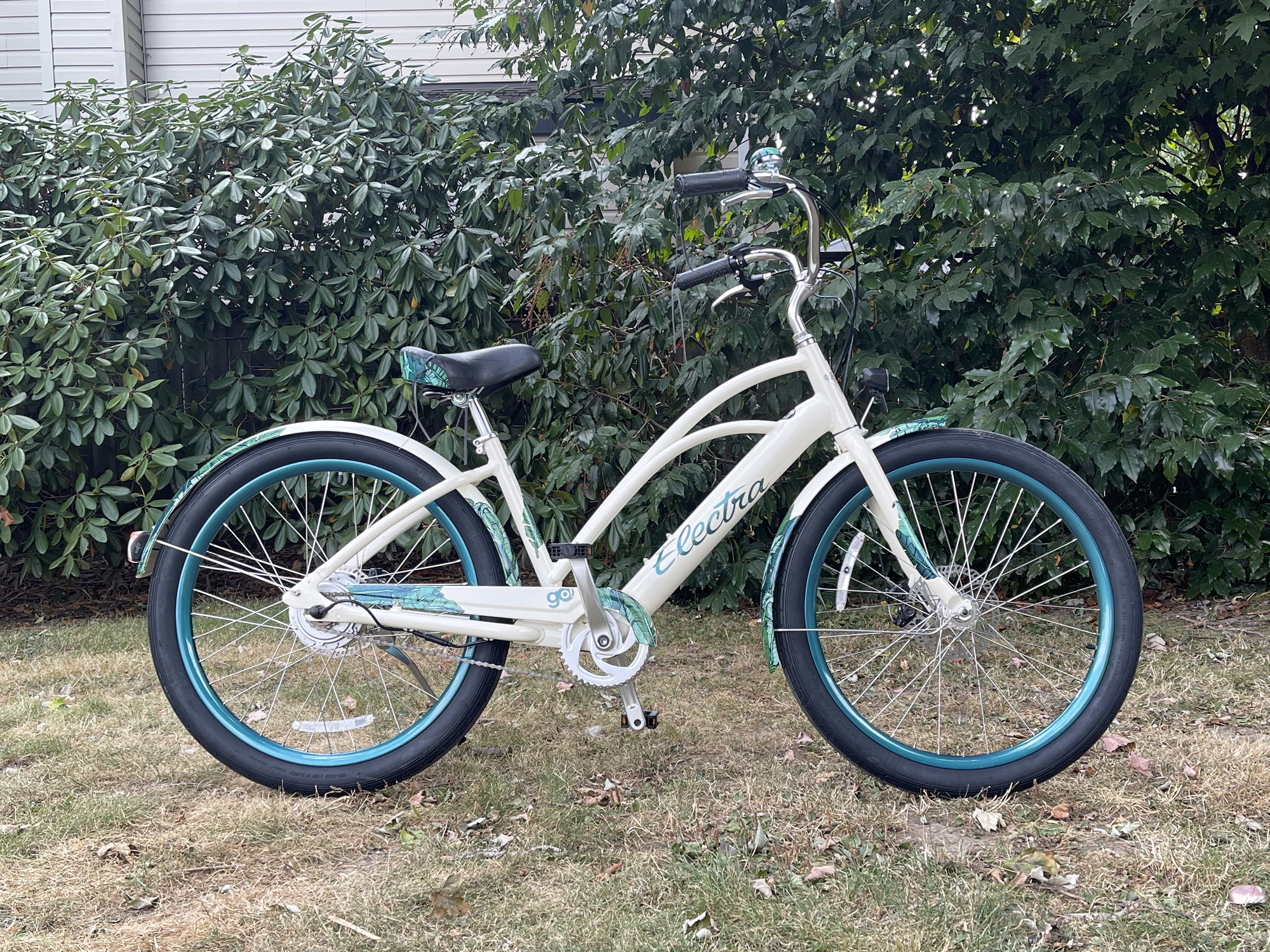
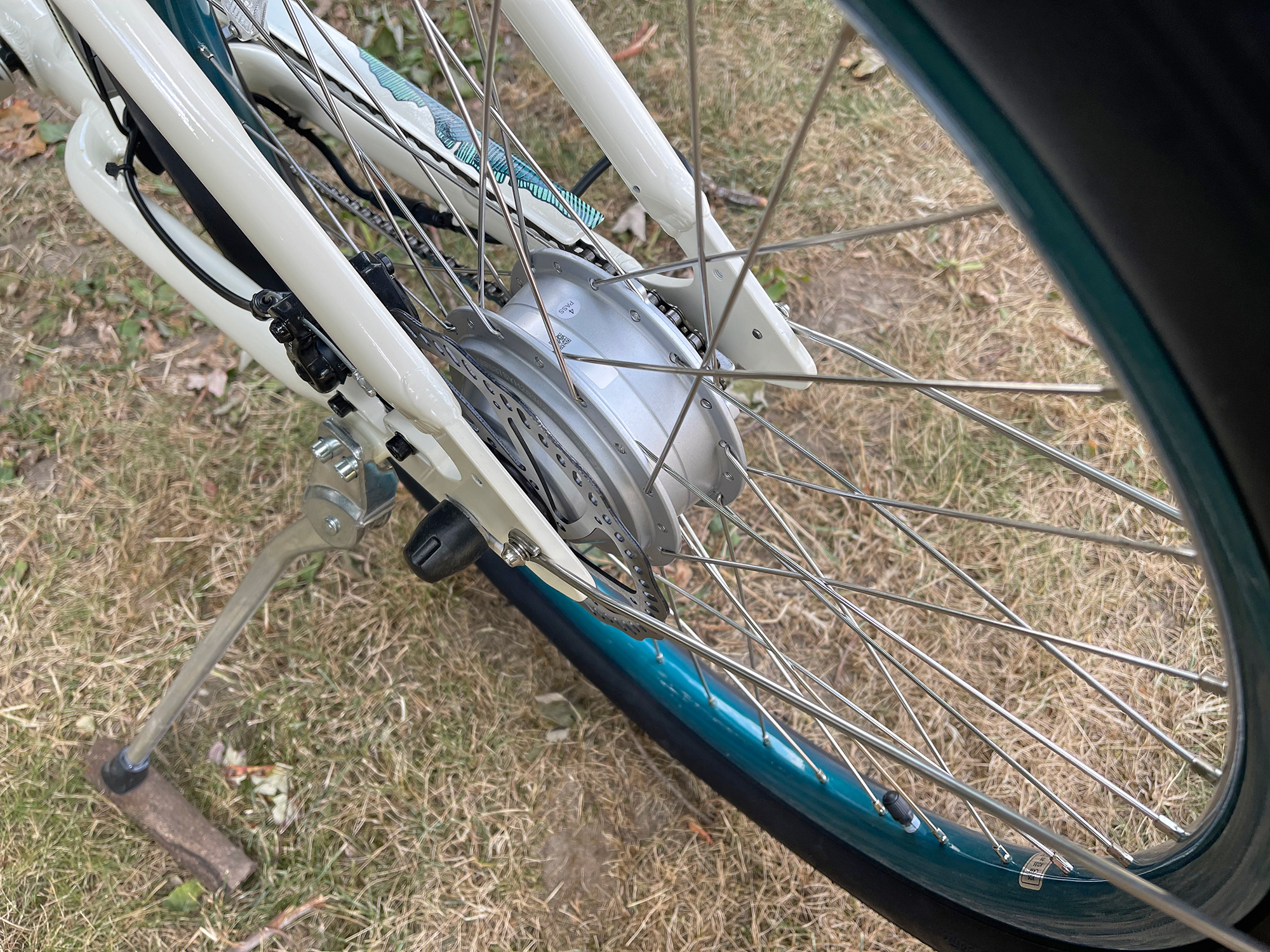
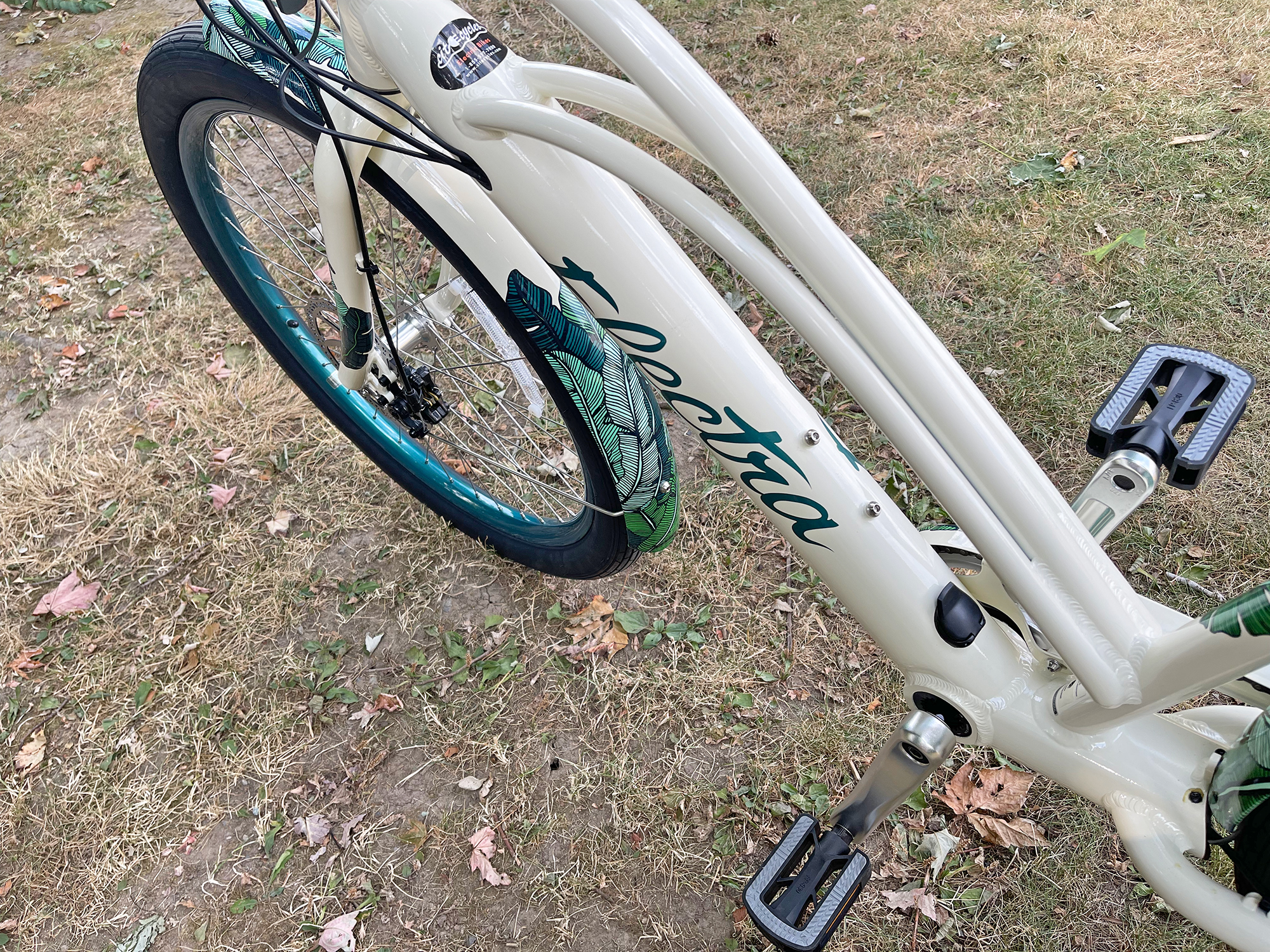
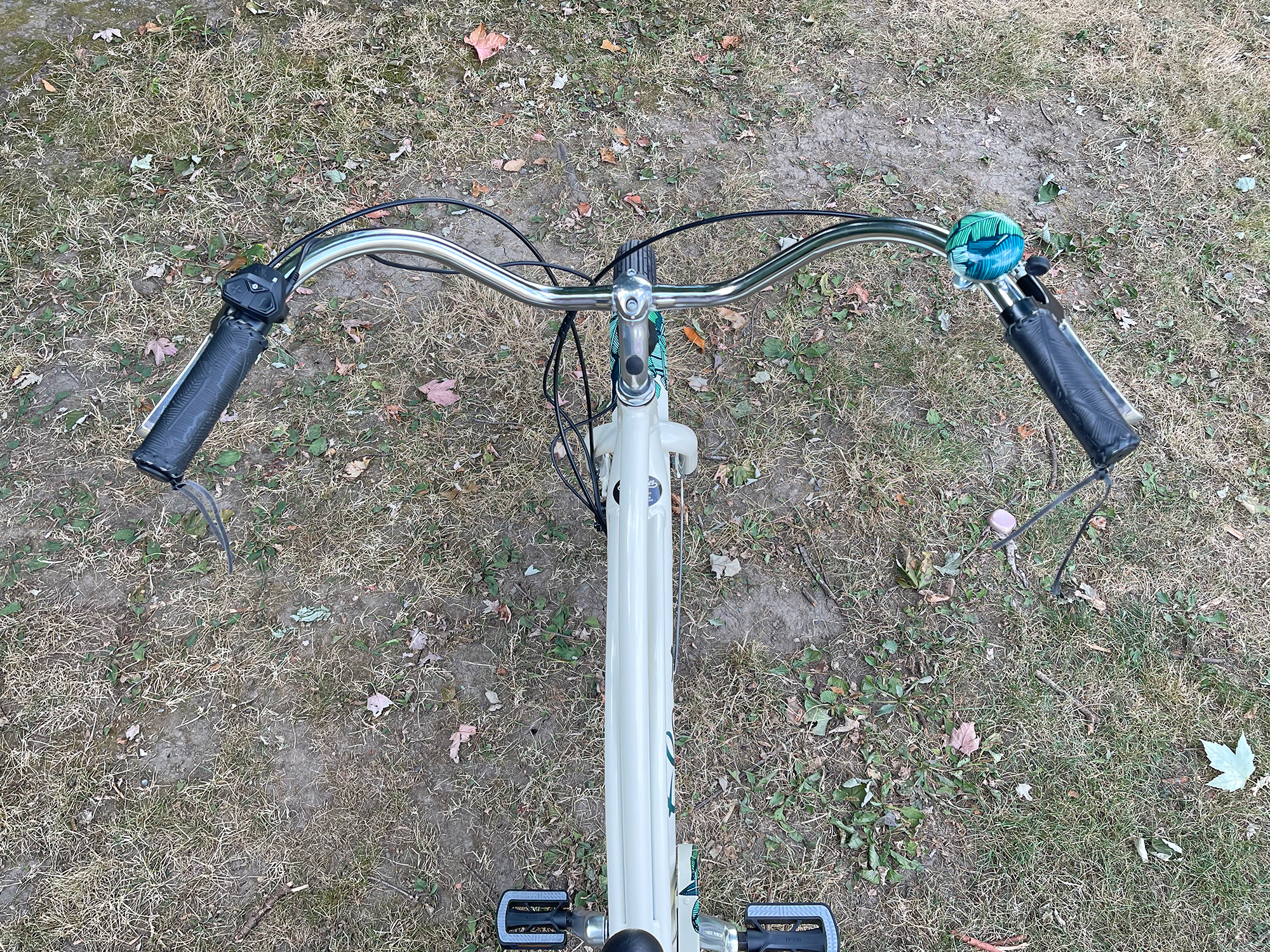

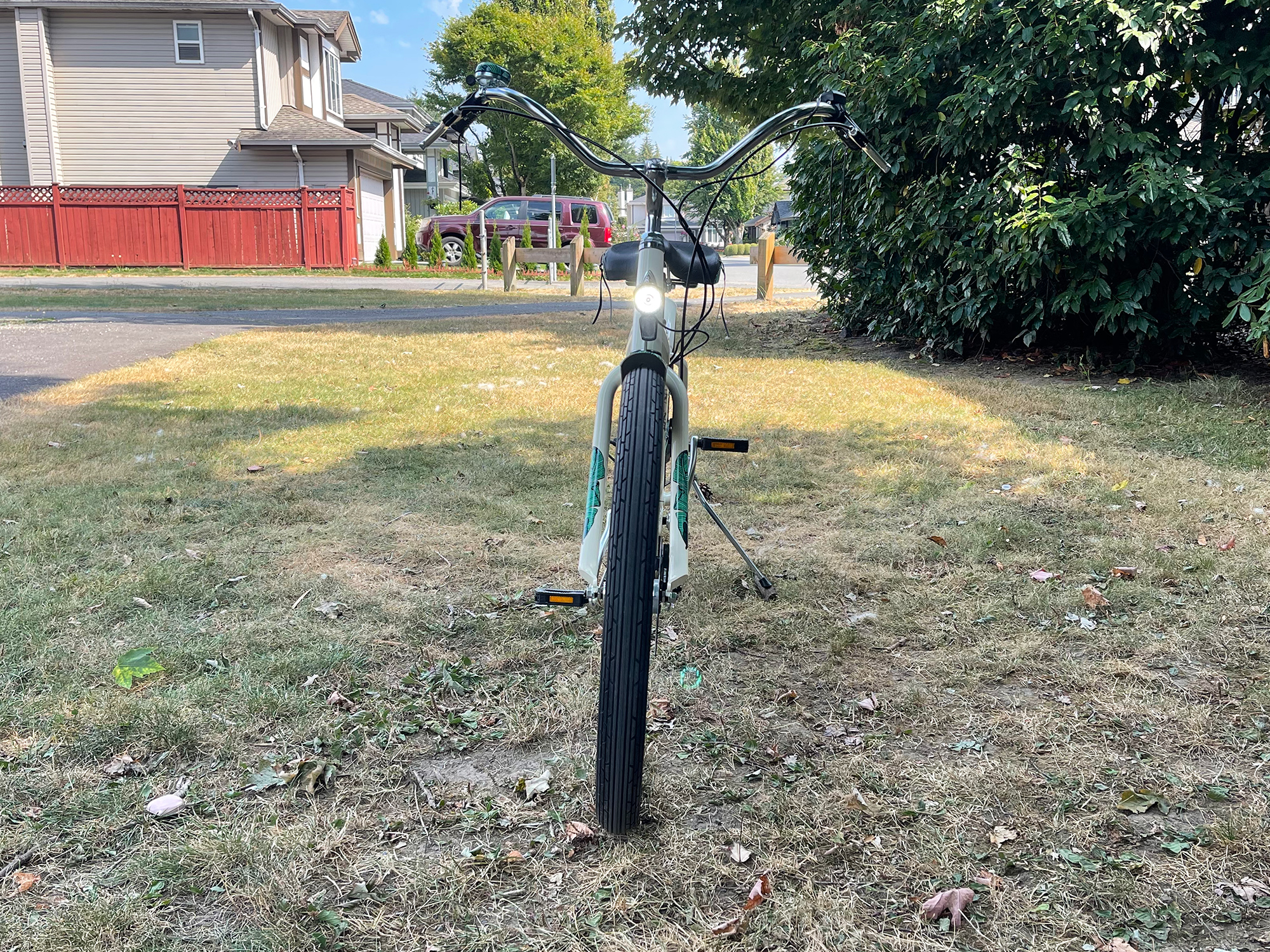
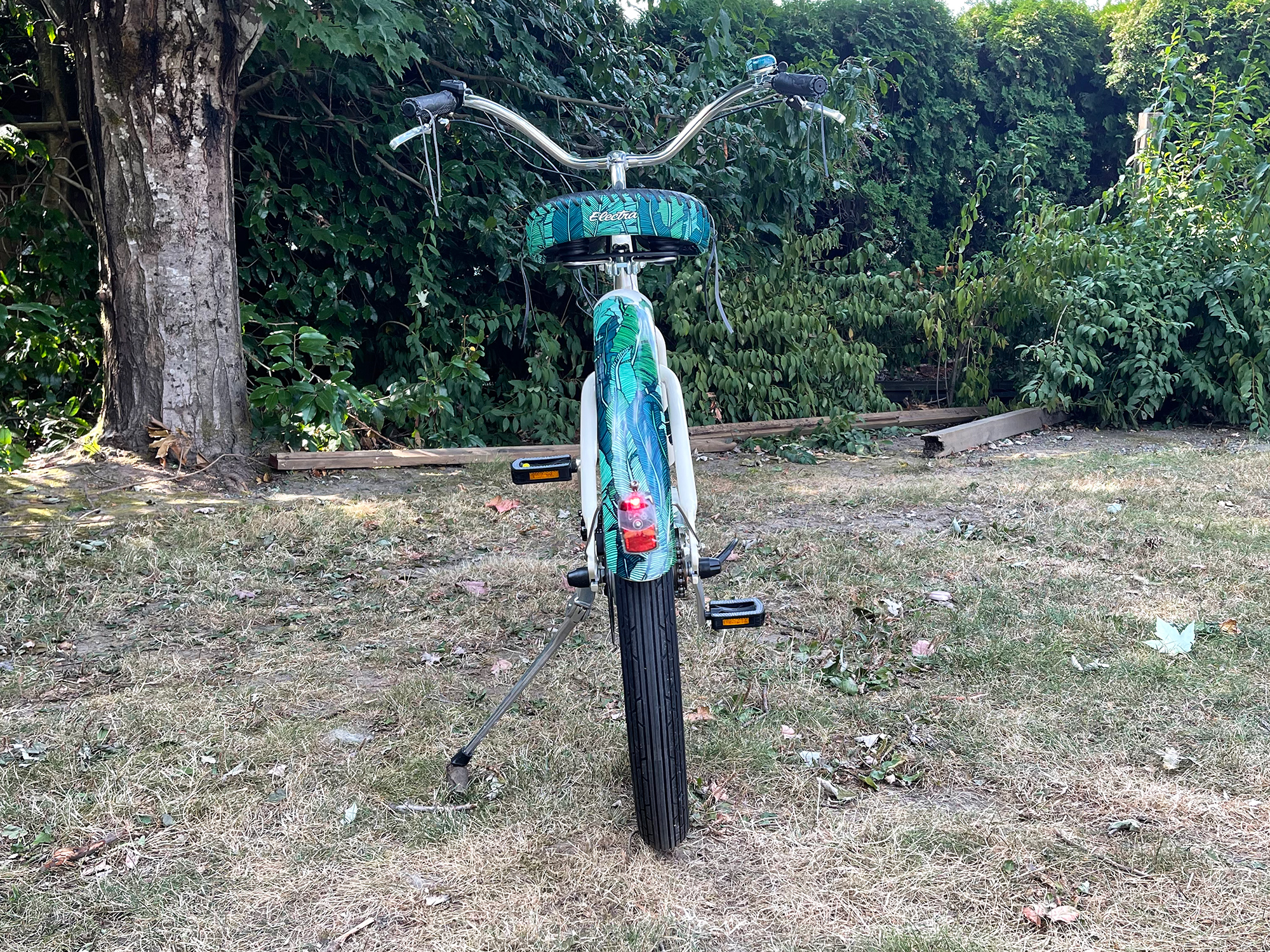
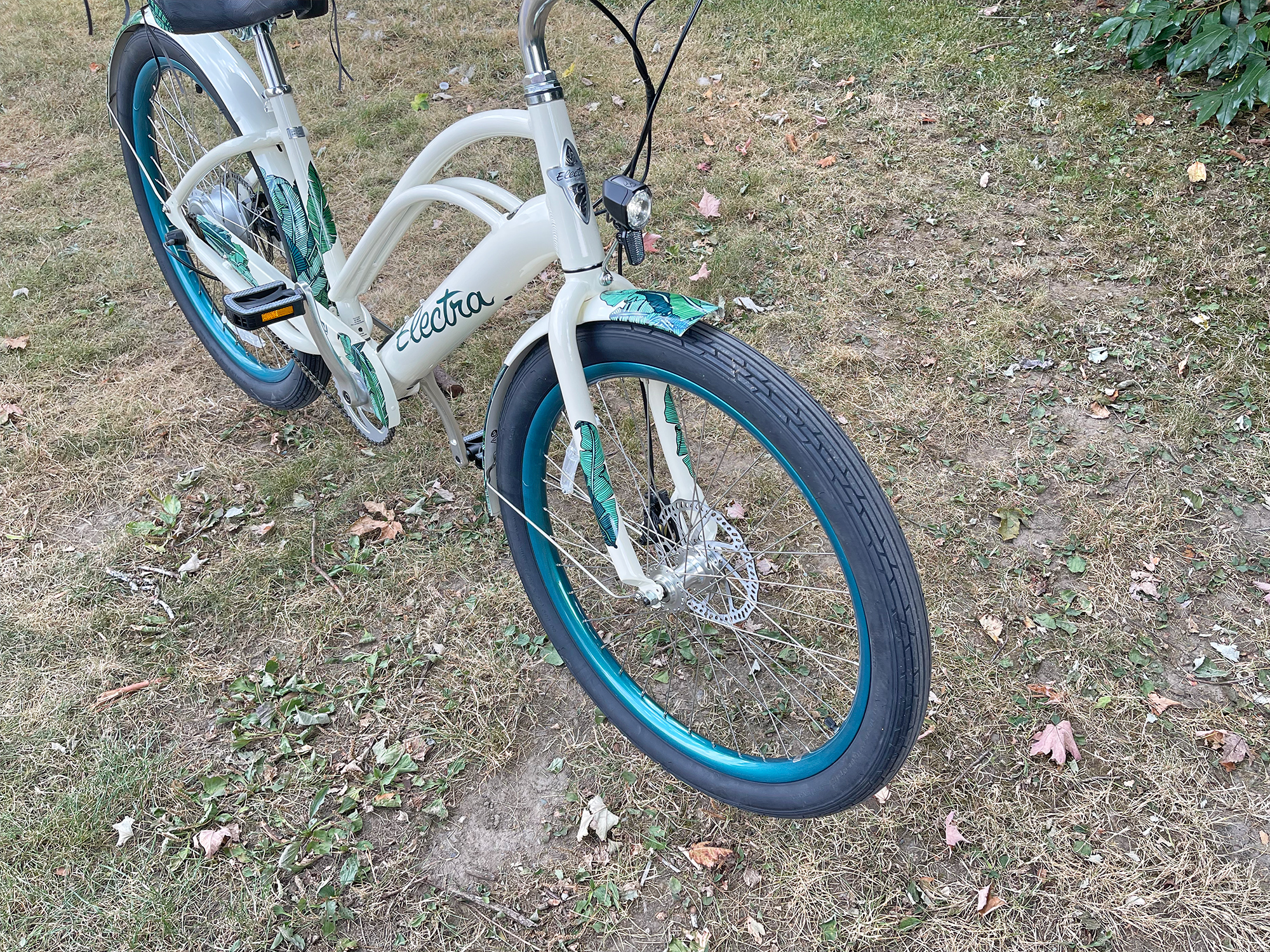
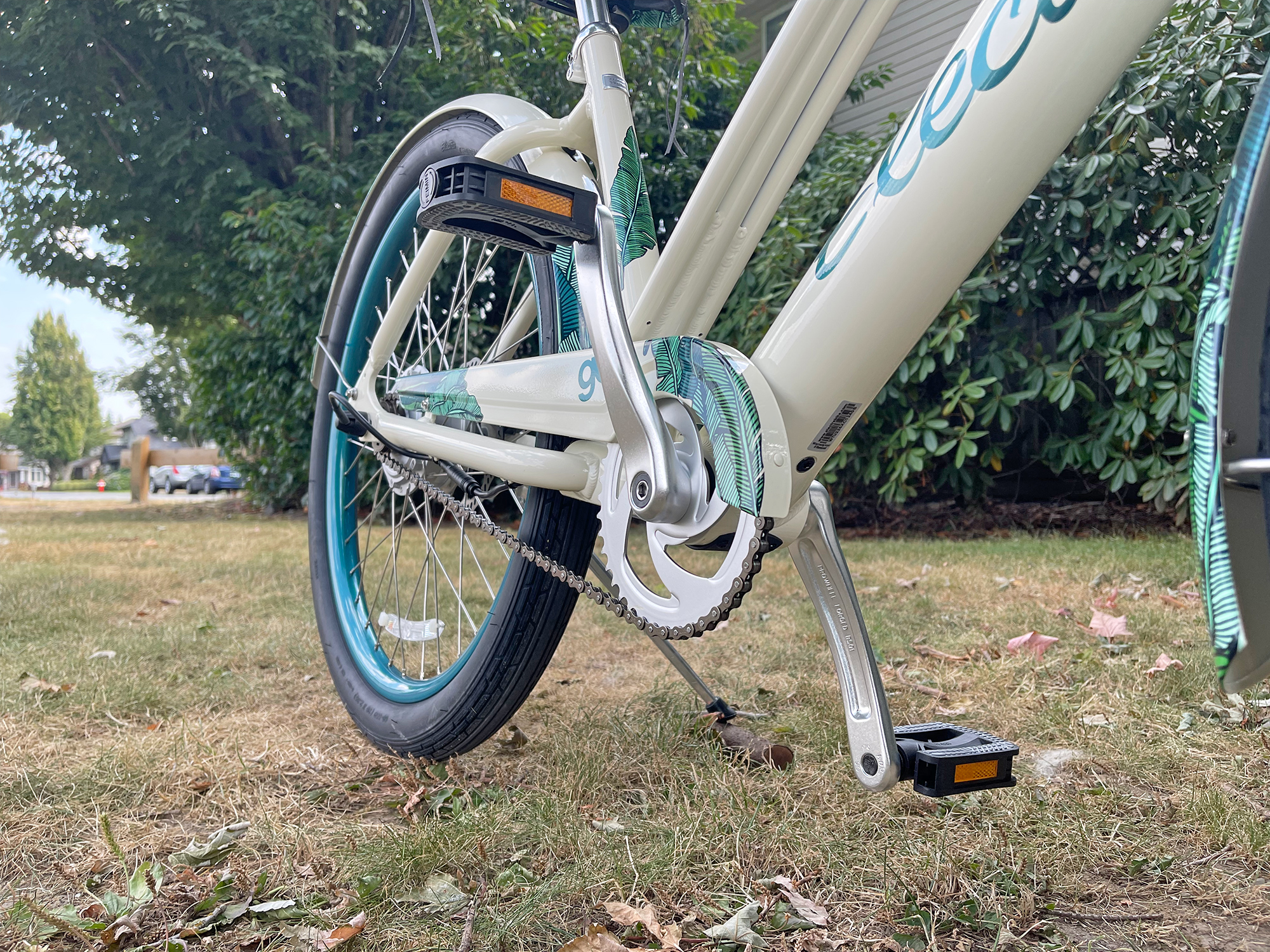

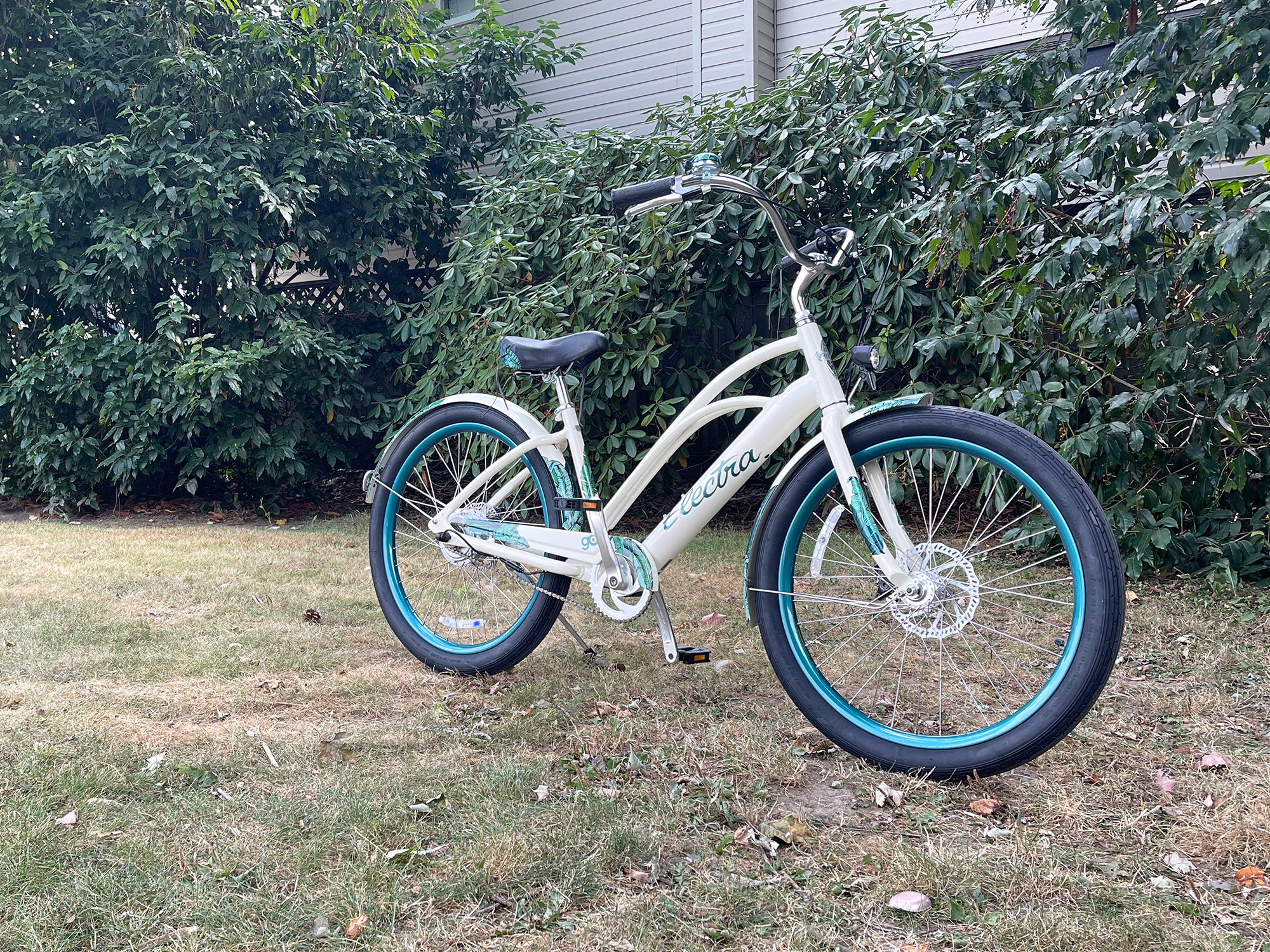
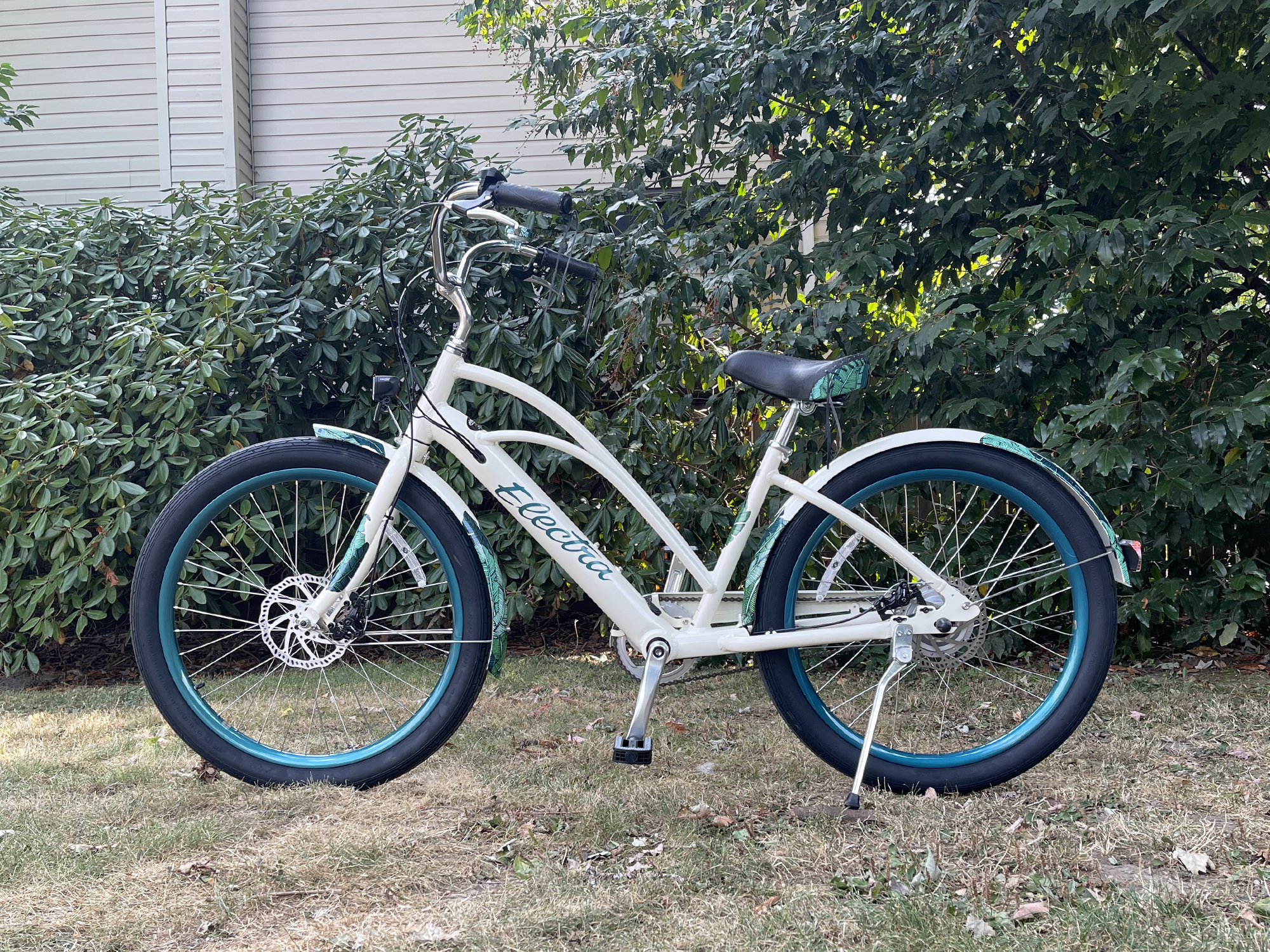
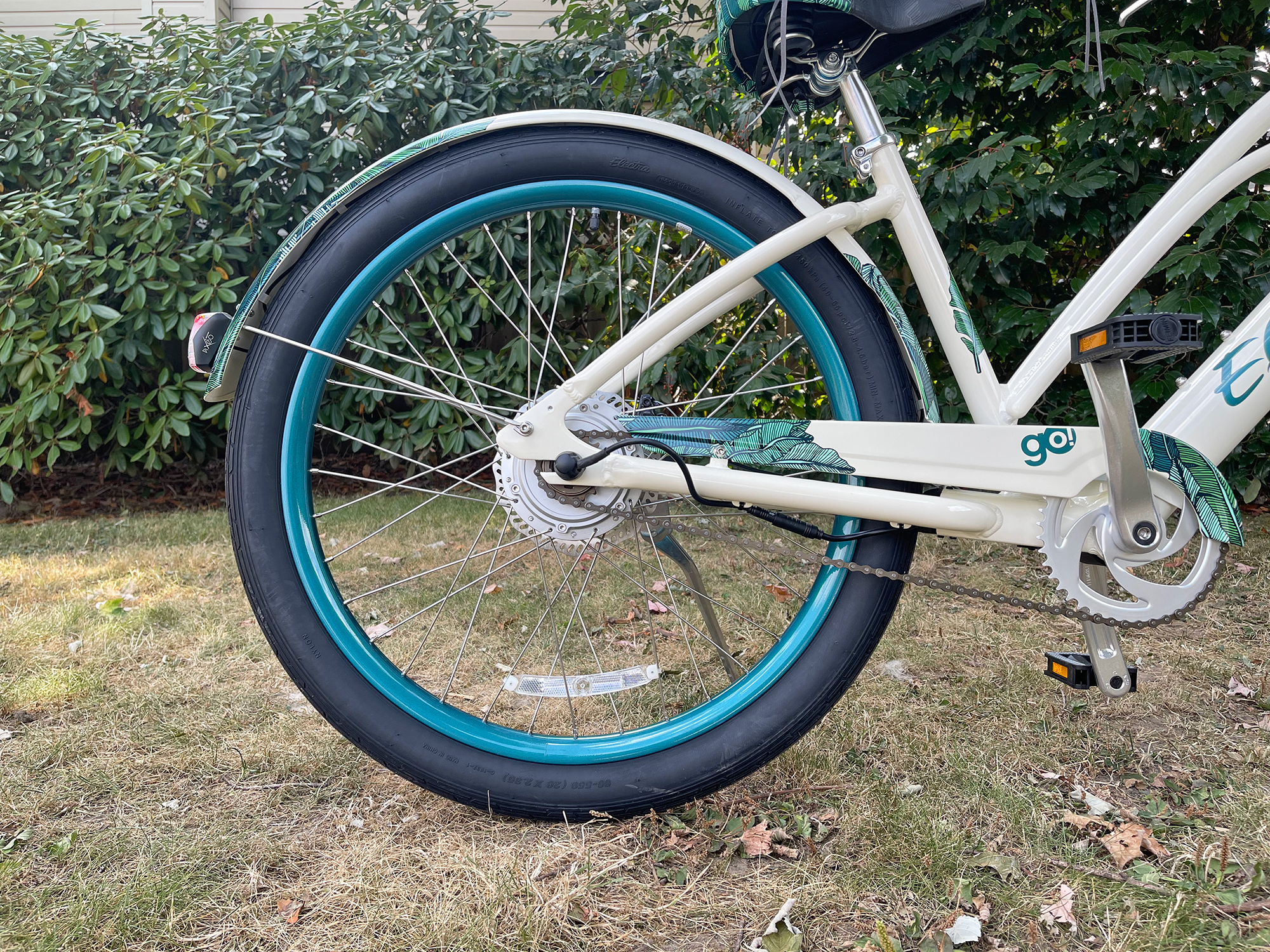
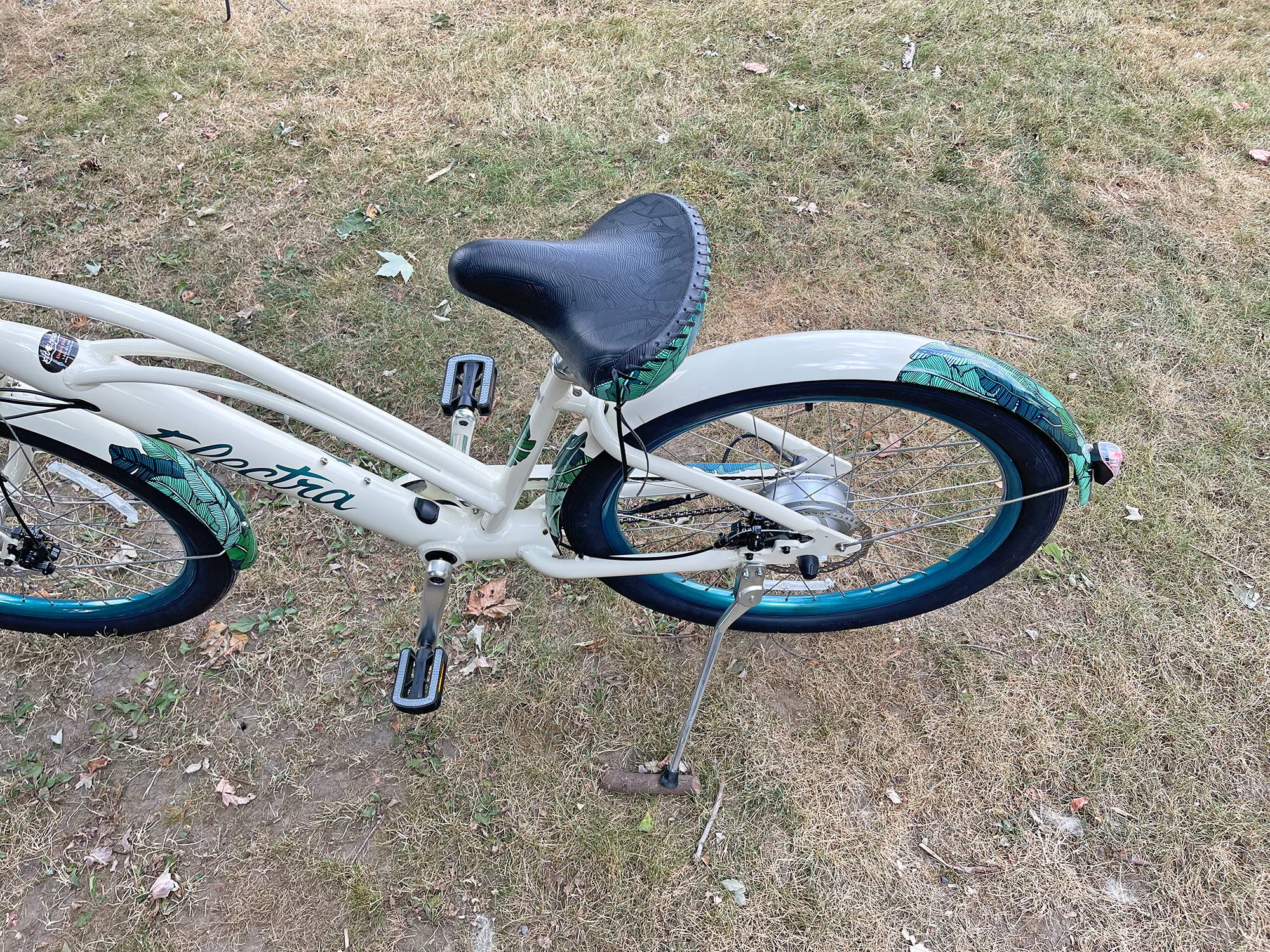
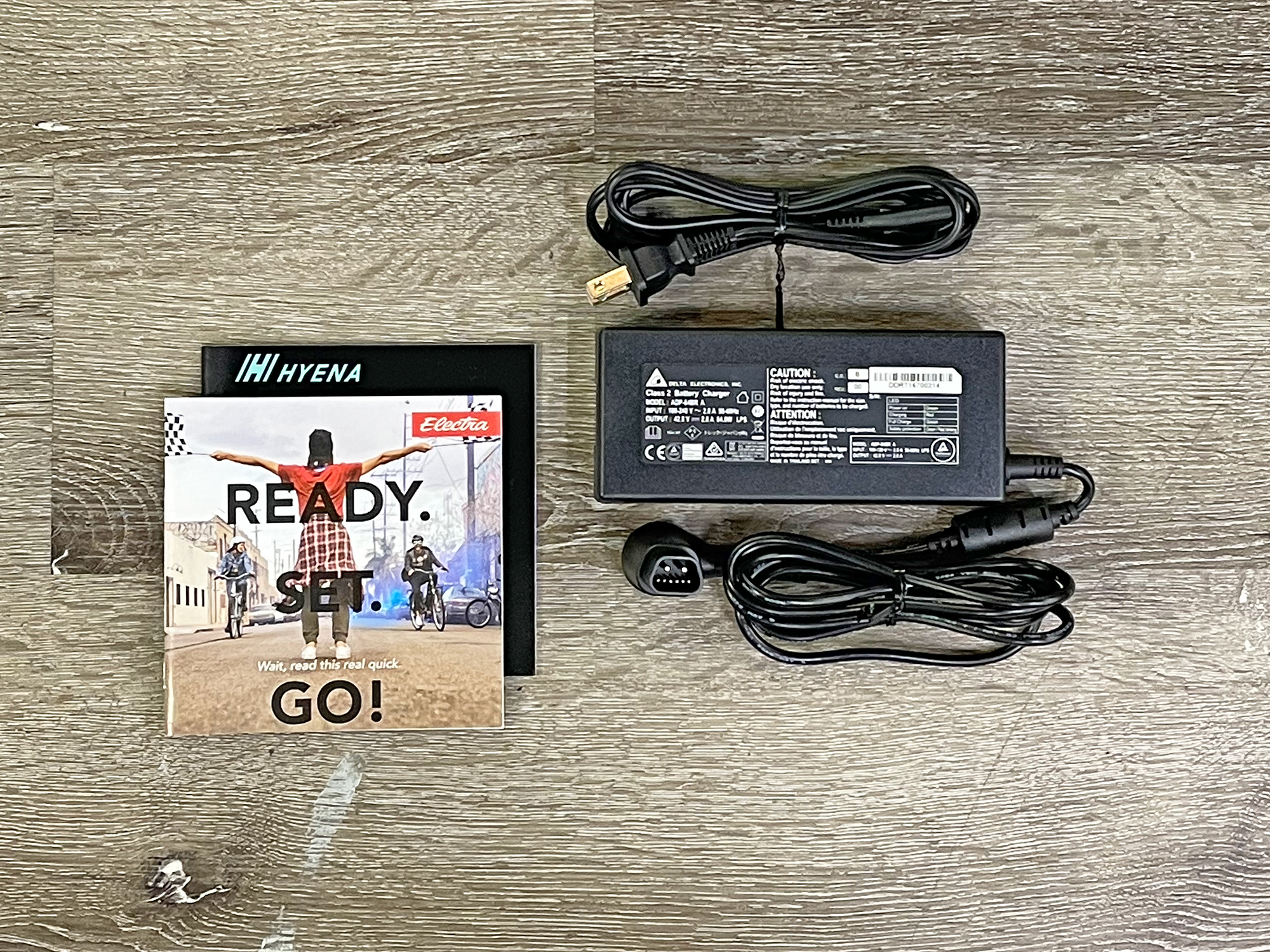
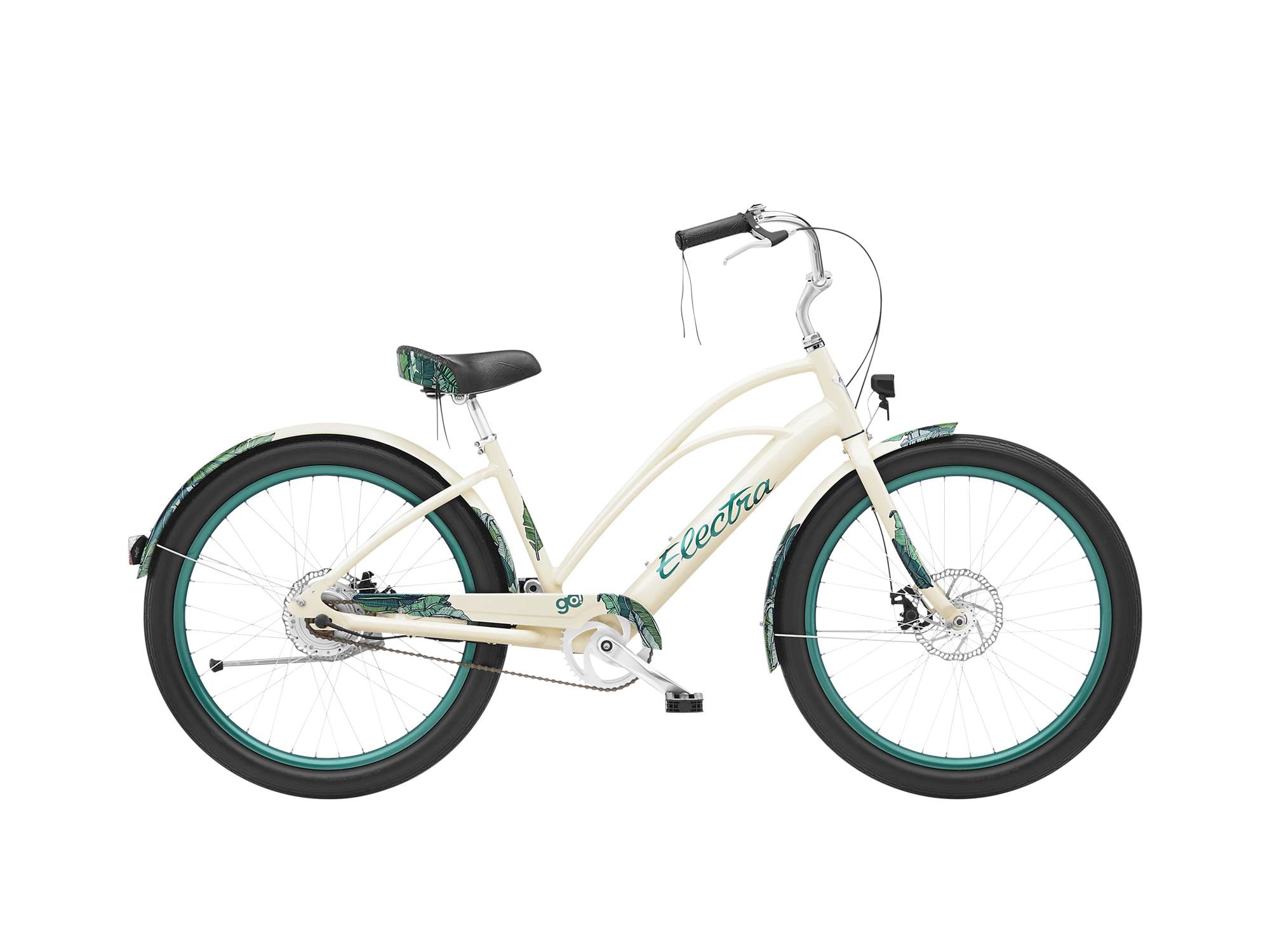

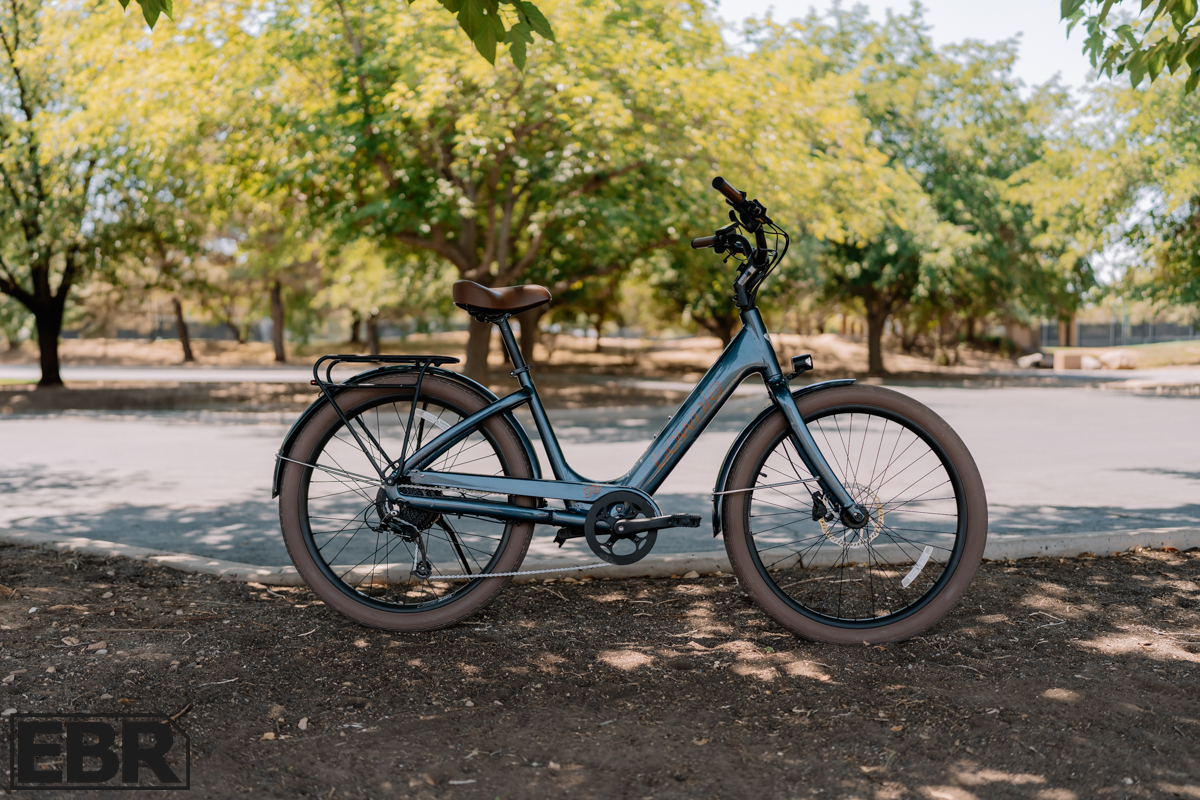
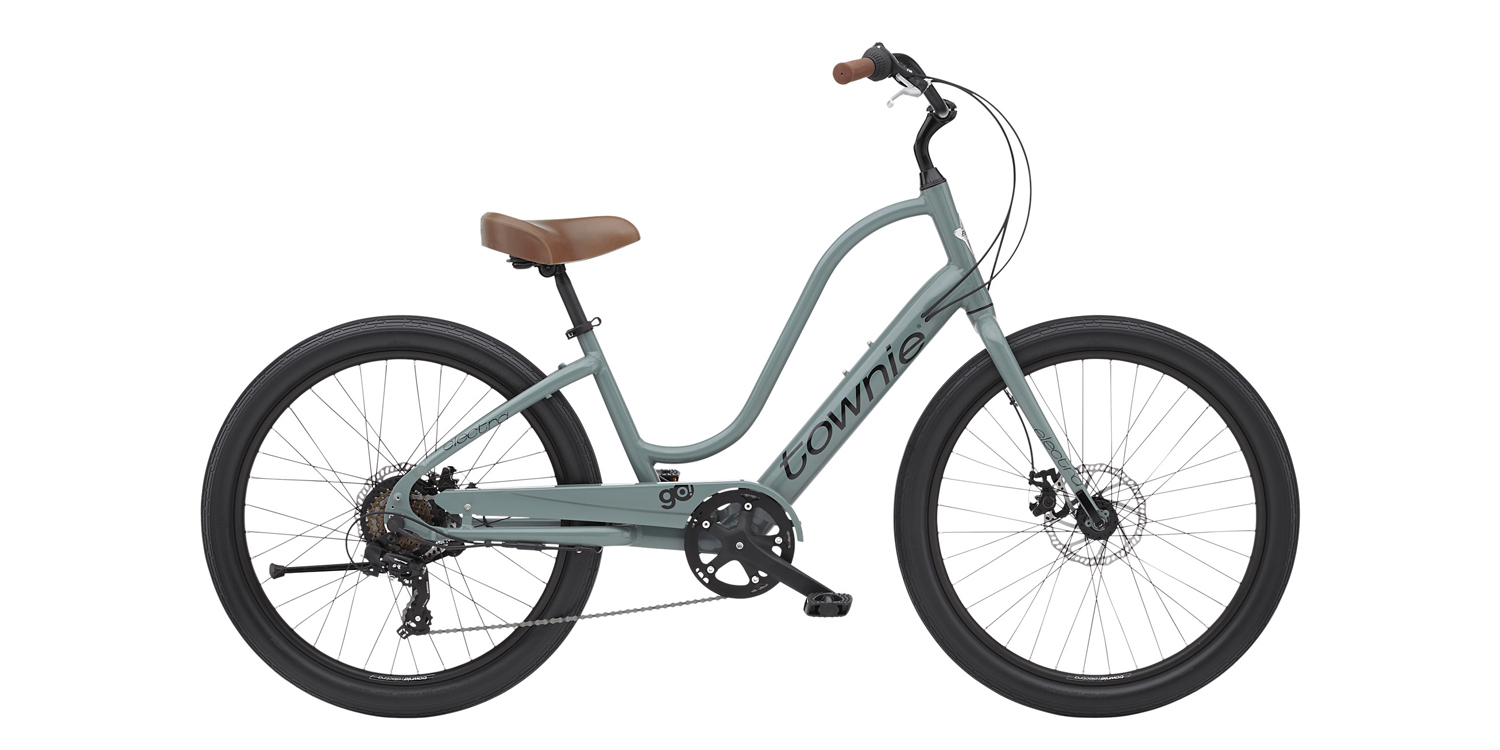
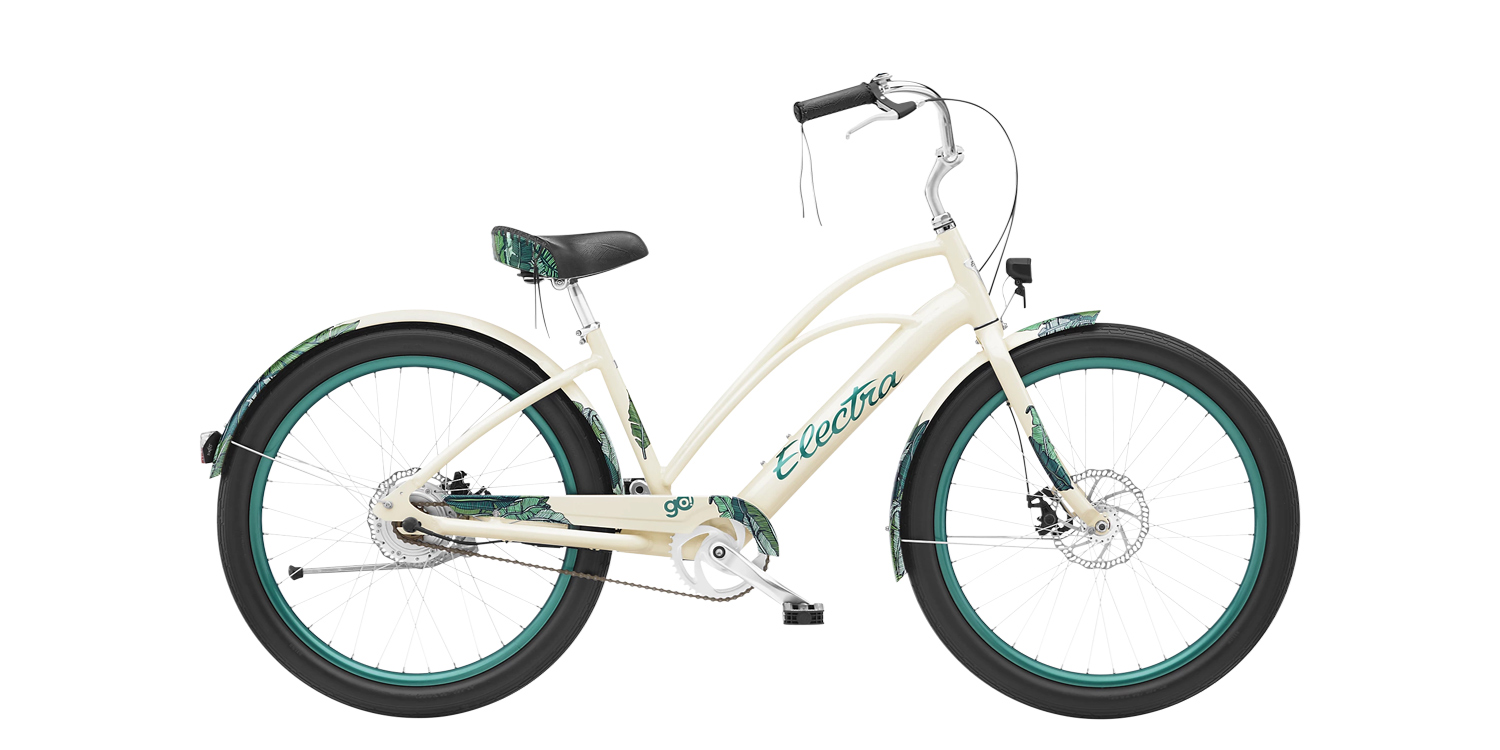
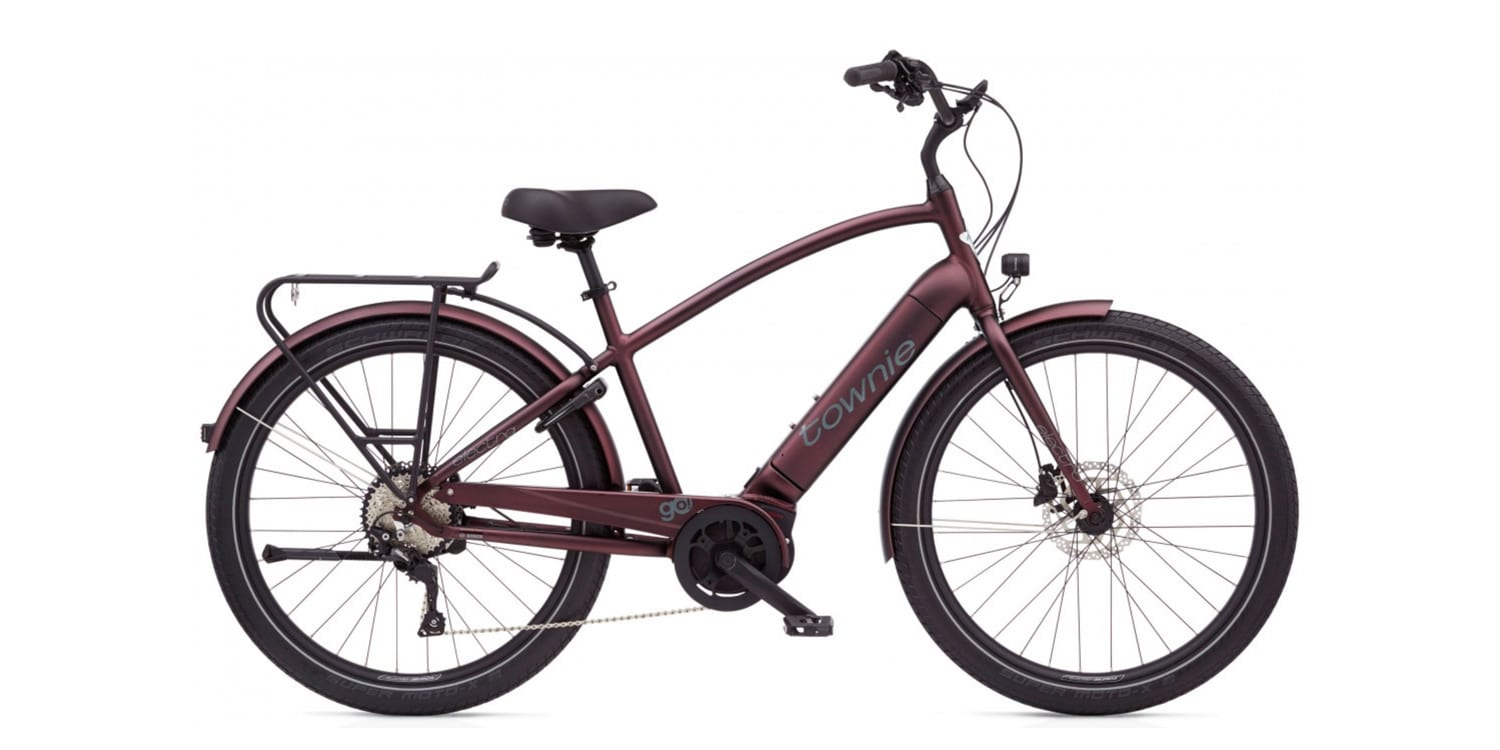
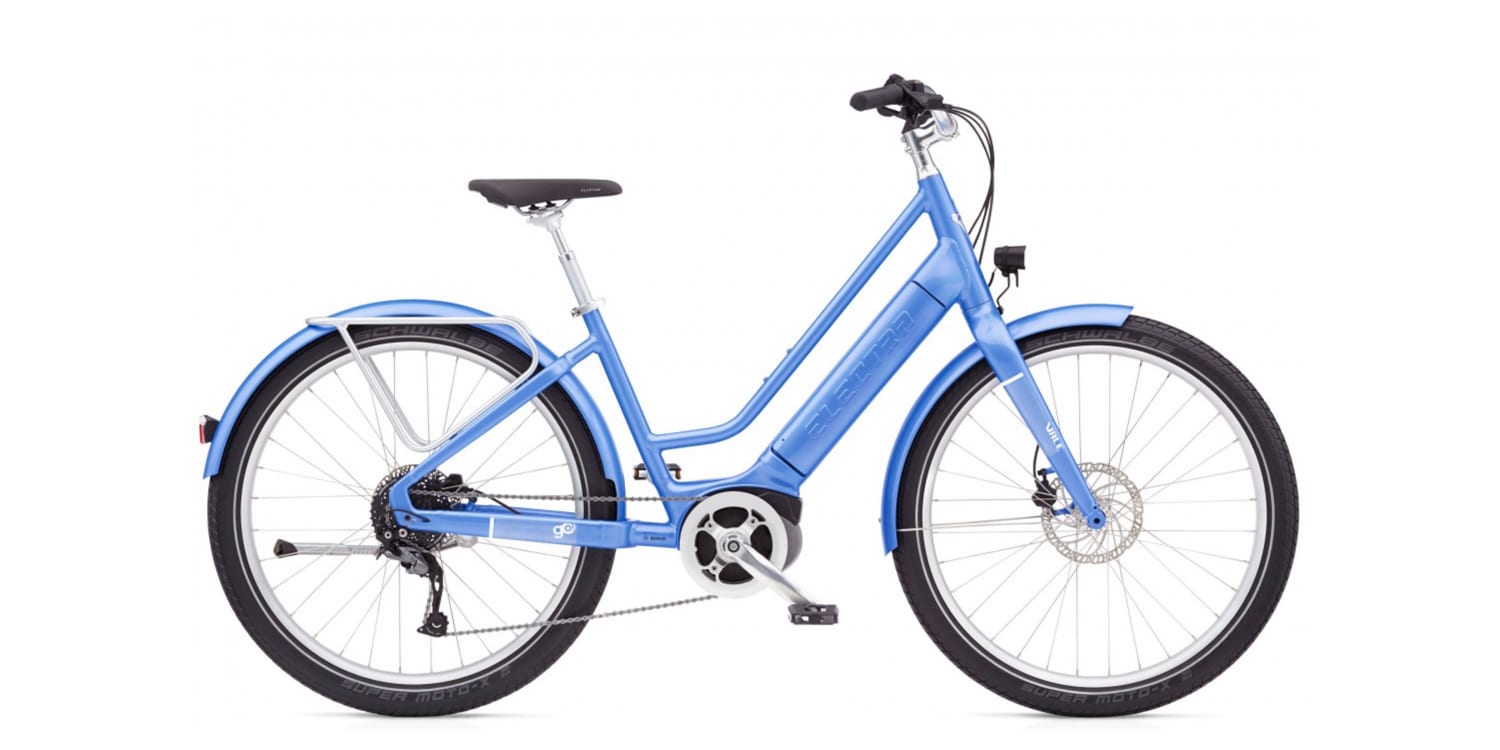
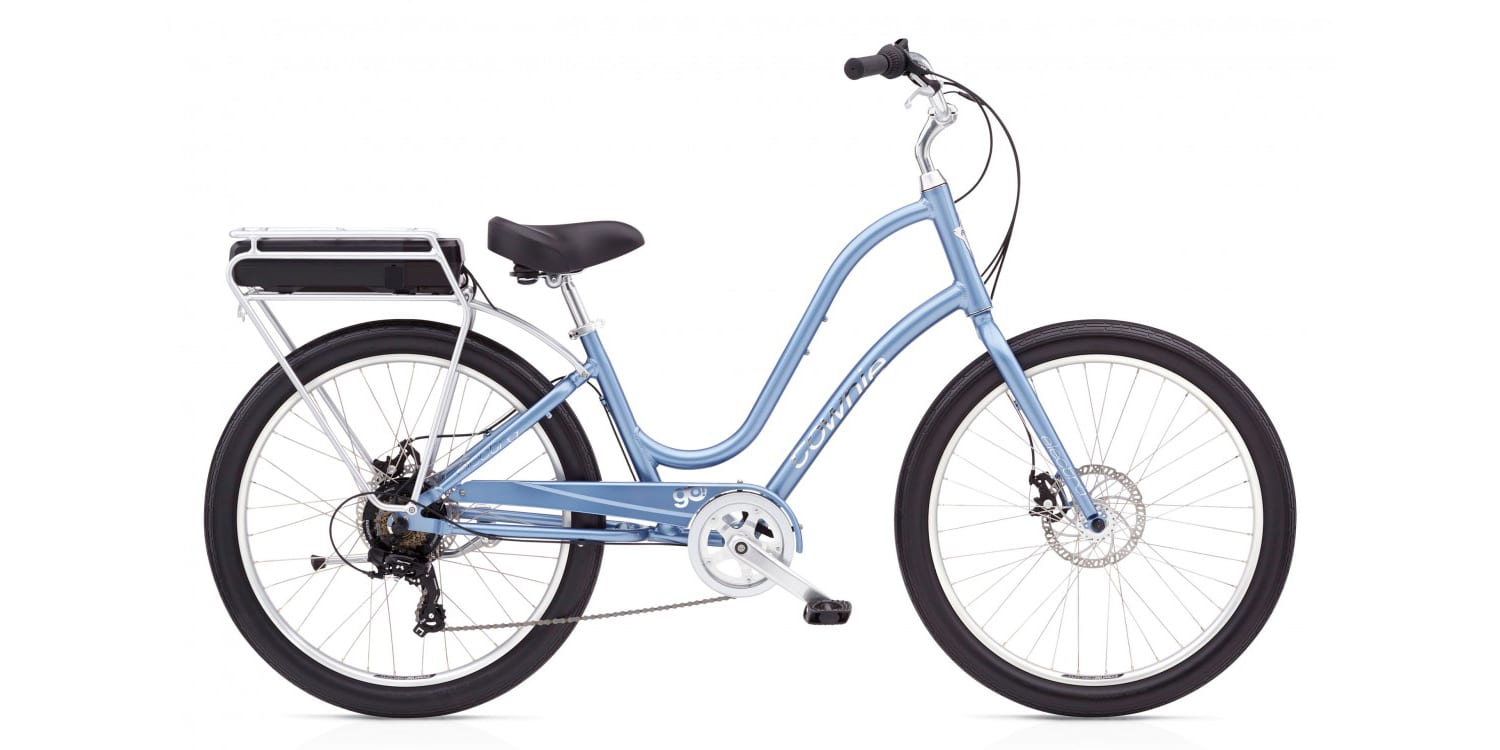
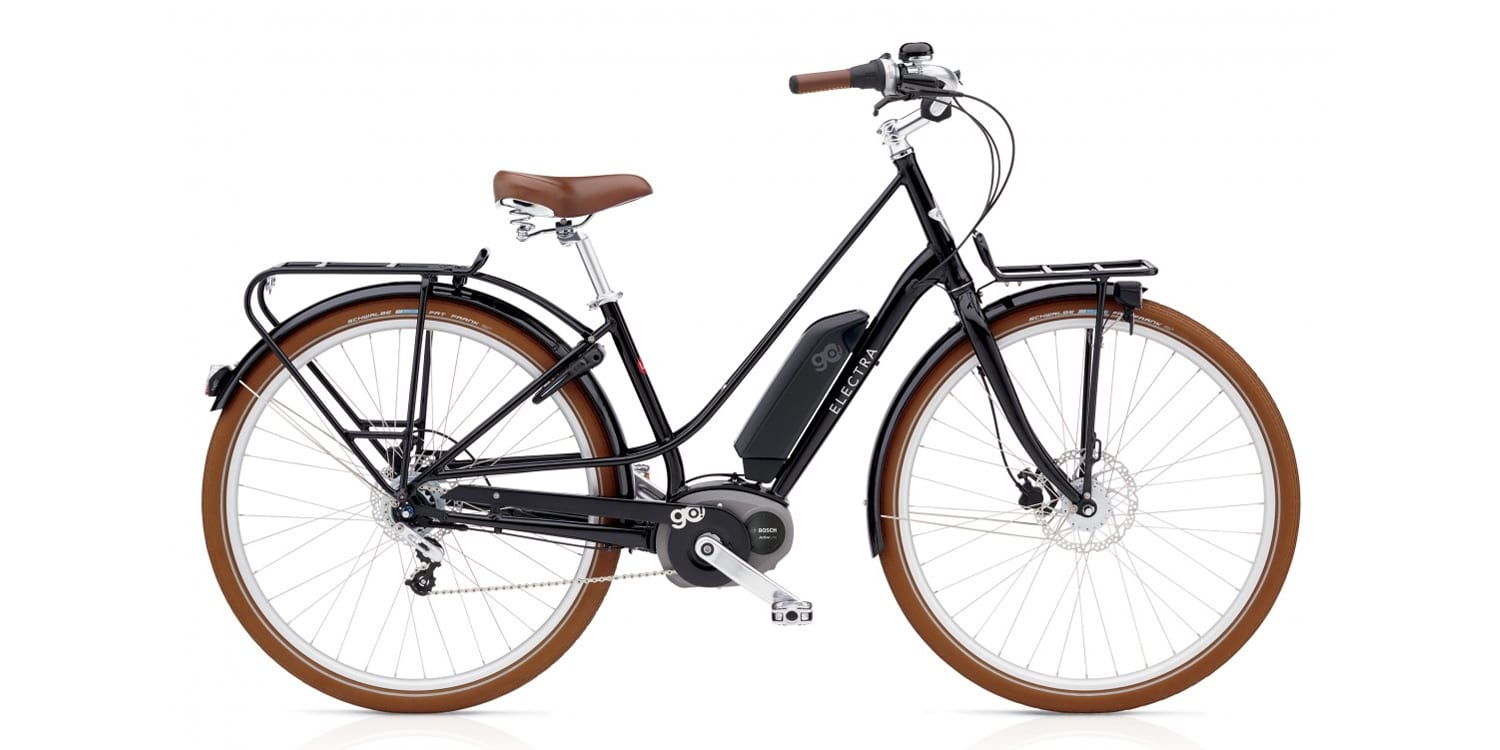
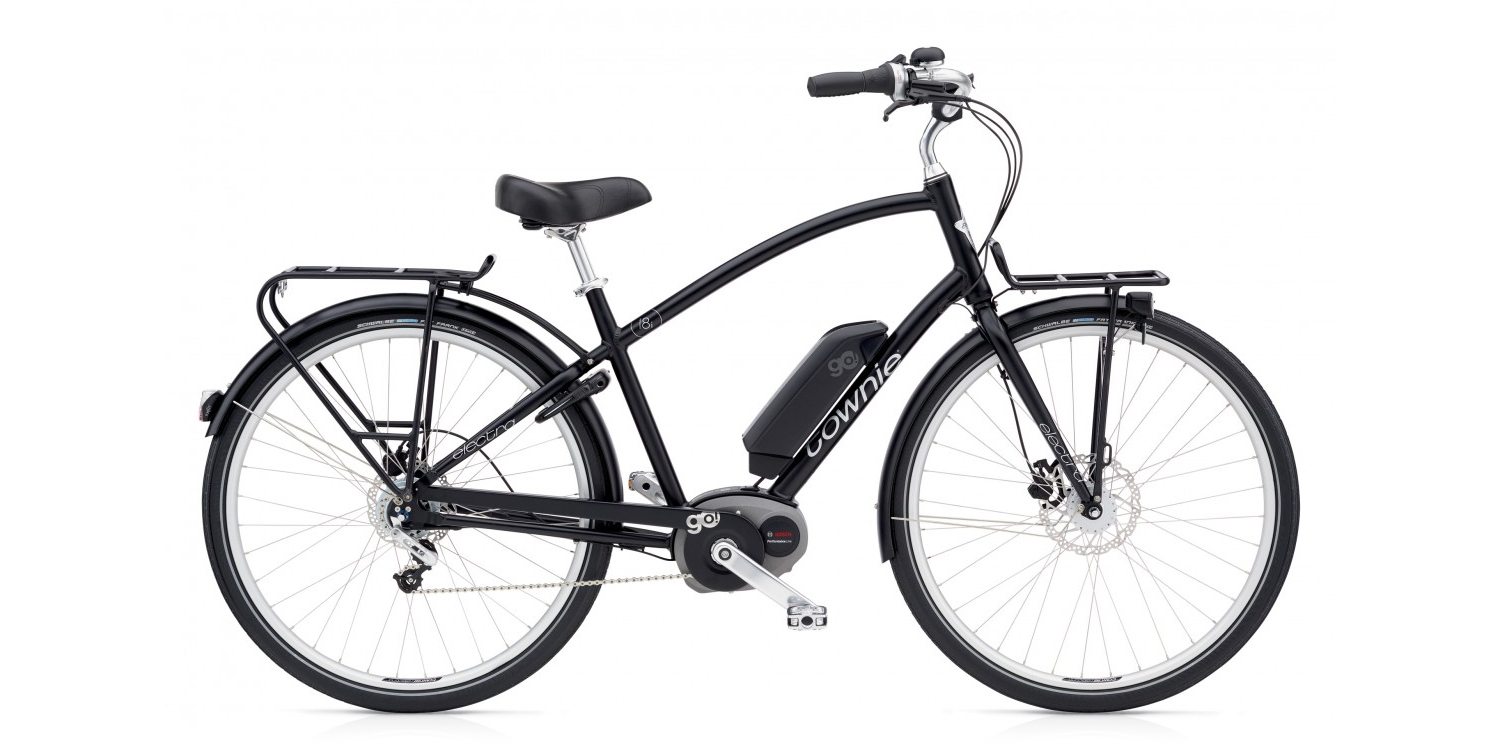
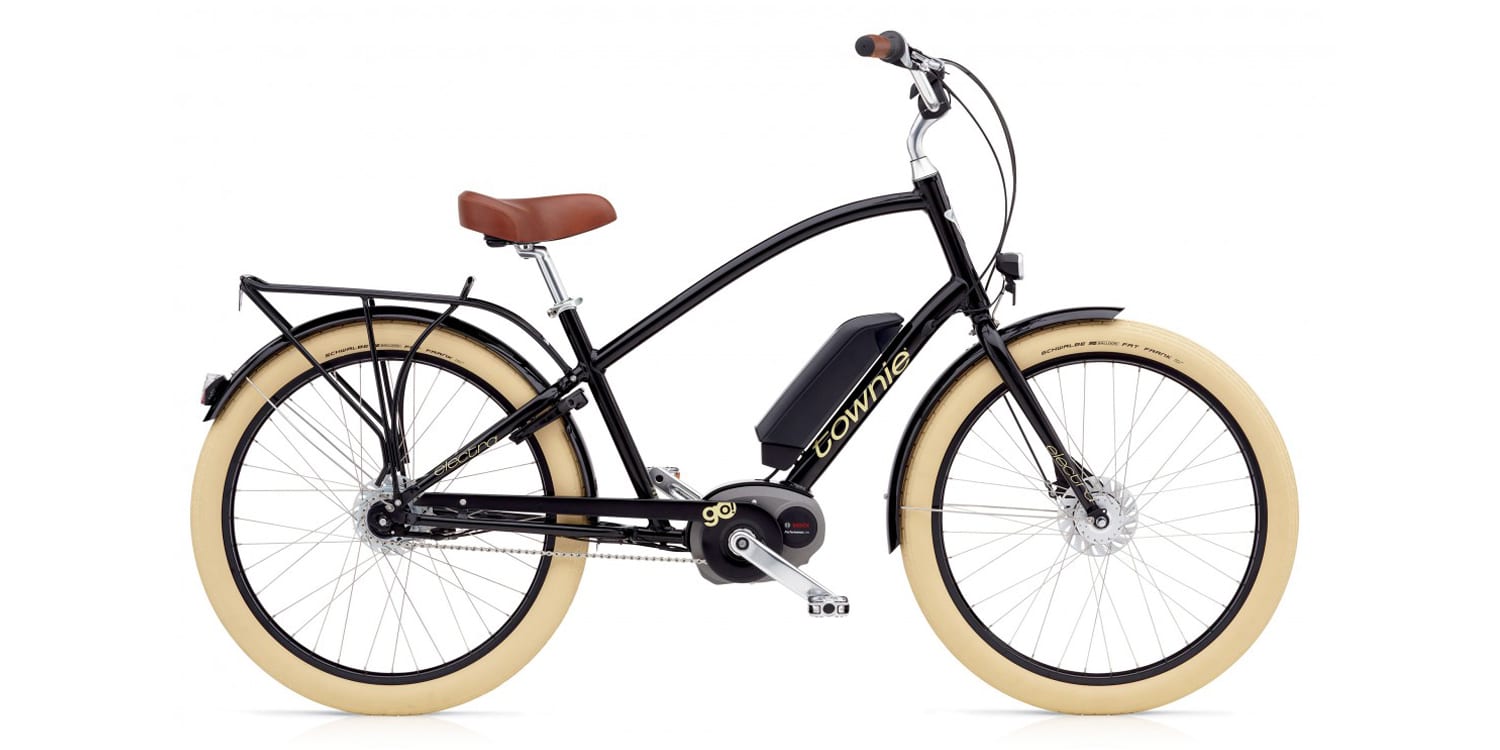
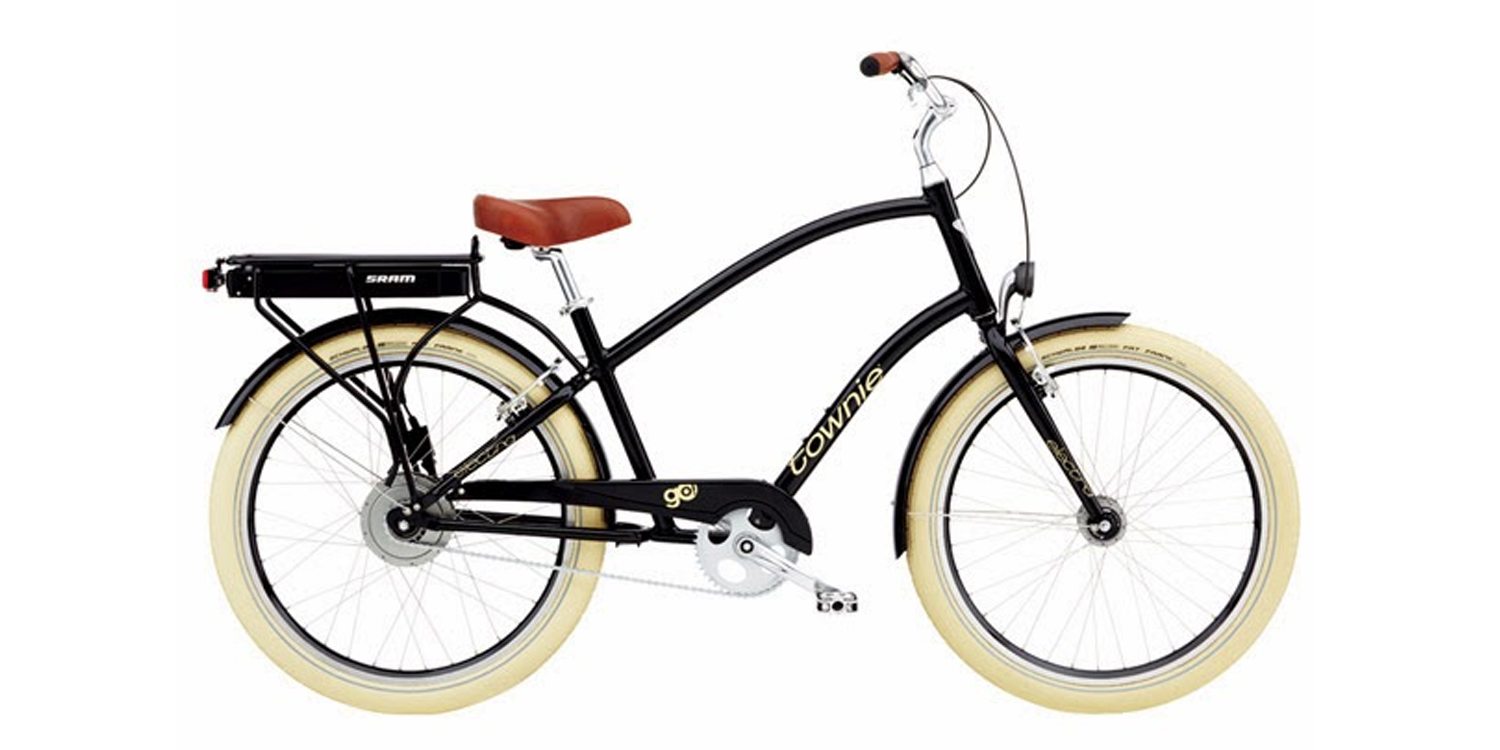
Reader Interactions